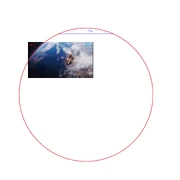- 1,673
- 289
The only way to ensure the globe we see isn't affected by that is by comparing the apparent size of landmarks with those of a proper view of the planet.
Follow along with the video below to see how to install our site as a web app on your home screen.
Note: This feature may not be available in some browsers.
Pretty much this, though DT has a different opinion about planetary shots.Kepekley23 said:This suggestion is perfectly fine for calcs that go like "an energy wave explodes and some hints of curvature are shown". For calcs that show pretty much the whole planet and especially calcs that show said planet from afar, this is absolutely not fine.
I mean, if the planet is so far away that the horizon view limitation can't come into play, we could just use the size of the planet.AguilaR101 said:The only way to ensure the globe we see isn't affected by that is by comparing the apparent size of landmarks with those of a proper view of the planet.
Kep said that planets shown from outer space will have to use planet size no matter what, so I think this is fine.Jasonsith said:How is this doing?
Thanks. And I think I can give my two cents:Ugarik said:I think I found the solution. I'll post it later today when I'm home
